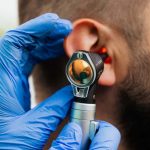
ipratropium/albuterol (salbutamol) solution – inhalation, DuoNeb
Medication Uses, How To Use, Side Effects, Precautions, Drug Interactions, Overdose, Notes, Missed Dose, Storage
USES: This product is used to treat and prevent symptoms caused by ongoing lung disease (chronic obstructive pulmonary disease-COPD) which includes bronchitis and emphysema. It contains 2 medications: ipratropium and albuterol (salbutamol). Both drugs relax the muscles around the airways to open them, making it easier to breathe. Controlling breathing problems can reduce time lost from work or school. HOW TO USE: Read the Patient Information Leaflet before starting this medication and each time you get a refill. Use a nebulizer to inhale the medication, which changes it to a fine mist. Learn how to prepare and use the nebulizer correctly. If a child is using this medication, a responsible adult should supervise. If you have any questions, ask your doctor, pharmacist, or respiratory therapist. Check the solution for particles or discoloration before using it. If present, do not use. Inhale the medication into your lungs using the nebulizer as directed by your doctor, usually 4 times a day. Avoid getting the medication in your eyes. It may cause eye pain, temporary blurred vision, and other vision changes. Use a mouthpiece or close your eyes during use to protect your eyes. Each treatment usually takes 5 to 15 minutes. Use this medication only through a nebulizer. Do not swallow or inject it. Clean the nebulizer and mouthpiece/face mask according to the manufacturer’s instructions to prevent infections. The US brand does not require mixing, while the Canadian brand can be used mixed or unmixed. Once opened, discard any unused solution. The dosage is based on your medical condition and response to treatment. Rinse your mouth after treatment to prevent dry mouth and throat irritation. Use this medication regularly at the same times each day for best results. Do not increase your dose or stop using it without consulting your doctor. Learn which medications/inhalers you should use every day and which to use if your breathing worsens. Ask your doctor what to do if you have worsening cough or shortness of breath, wheezing, increased sputum, worsening peak flow meter readings, increased use of your quick-relief inhaler, or if your quick-relief inhaler is not effective. Know when to treat breathing problems on your own and when to seek immediate medical help. Inform your doctor if your symptoms do not improve or worsen. SIDE EFFECTS: See How to Use section for more information. Headache, dizziness, nausea, dry mouth, shaking, nervousness, or constipation may occur. If any of these effects persist or worsen, notify your doctor or pharmacist promptly. Although rare, this medication may cause severe sudden worsening of breathing problems immediately after use. Seek medical help immediately if you experience sudden worsening of breathing. Contact your doctor immediately if you experience any serious side effects, including eye pain, difficult/painful urination, vision changes, muscle cramps, chest pain, fast/irregular heartbeat, rapid breathing, confusion, or a serious allergic reaction. This is not a complete list of possible side effects. Report any other effects to your doctor or pharmacist. In the US, call your doctor or FDA at 1-800-FDA-1088. In Canada, call your doctor or Health Canada at 1-866-234-2345. PRECAUTIONS: Inform your doctor or pharmacist if you are allergic to ipratropium, albuterol (salbutamol), tiotropium, atropine, or other belladonna-type drugs, or if you have any other allergies. This product may contain inactive ingredients that can cause allergic reactions or other problems. Consult your pharmacist for more information. Before using this medication, inform your doctor or pharmacist about your medical history, especially if you have high blood pressure, heart disease, glaucoma, difficulty urinating, seizures, an overactive thyroid, or diabetes. This drug may cause dizziness, blurred vision, or other vision changes. Avoid activities that require alertness or clear vision until you can perform them safely. Limit alcohol consumption. Inform your doctor or dentist about all the products you use before undergoing surgery. Older adults may be more sensitive to the side effects, especially difficulty urinating or constipation. During pregnancy, use this medication only if clearly needed. Discuss the risks and benefits with your doctor. It is unknown if this medication passes into breast milk. Consult your doctor before breastfeeding. DRUG INTERACTIONS: Keep a list of all the products you use and share it with your doctor and pharmacist to prevent drug interactions. Do not start, stop, or change the dosage of any medicines without your doctor’s approval. OVERDOSE: If overdose is suspected, contact a poison control center or emergency room immediately. Symptoms of overdose may include chest pain, fast/irregular heartbeat, and seizures. NOTES: Do not share this medication. Periodic medical tests may be conducted to monitor your progress or check for side effects. Consult your doctor for more information. MISSED DOSE: If you miss a dose, use it as soon as you remember. If it is near the time for your next dose, skip the missed dose and resume your usual schedule. Do not double the dose. STORAGE: Store the US product at 36-77 degrees F (2-25 degrees C), and the Canadian product at room temperature. Store the vials away from light in the foil pouch or carton until ready for use. Do not store in the bathroom. Keep all medications out of reach of children and pets. Do not flush medications down the toilet or pour them into a drain unless instructed to do so. Dispose of expired or unused products properly. MEDICAL ALERT: Your condition can cause complications in a medical emergency. To enroll in MedicAlert, call 1-888-633-4298 (US) or 1-800-668-1507 (Canada). Last revised October 2013. Copyright(c) 2013 First Databank, Inc.
Report Problems to the Food and Drug Administration
If you experience negative side effects from prescription drugs, report them to the FDA. Visit the FDA MedWatch website or call 1-800-FDA-1088.
This material is selected from data included with permission and copyrighted by First Databank, Inc. It may not be distributed without authorization.
CONDITIONS OF USE: The information in this database is intended to supplement the expertise and judgment of healthcare professionals. It does not cover all possible uses, directions, precautions, drug interactions, or adverse effects, nor does it imply that a particular drug is safe, appropriate, or effective for you or anyone else. Consult a healthcare professional before taking any drug, changing your diet, or starting or discontinuing any course of treatment.


